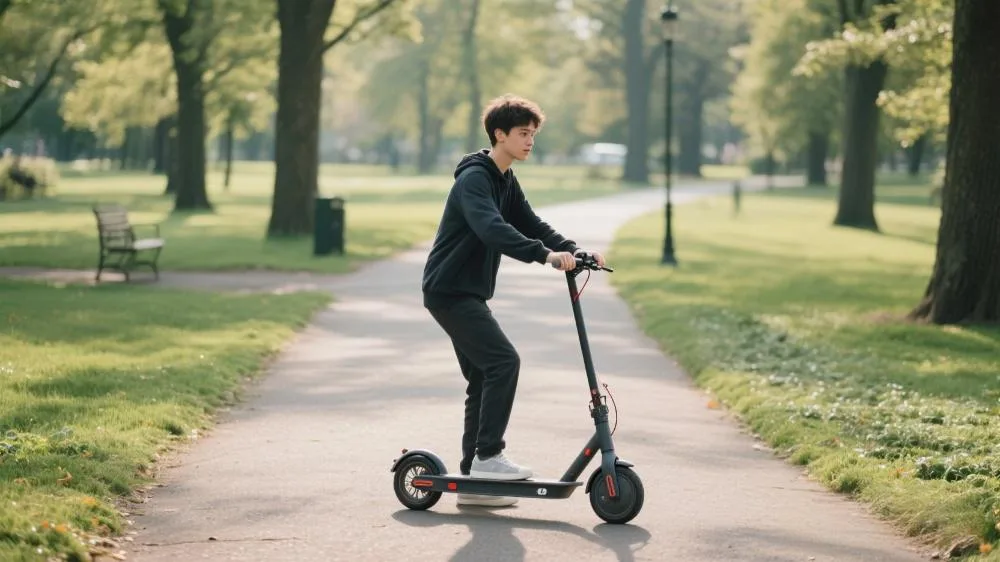how to use an e-scooter

At dawn in Berlin, 25-year-old designer Lina bridges the last two kilometers between subway and office with her e-scooter, while across the Atlantic, San Francisco delivery rider Marcus relies on his to complete neighborhood “last-mile” distributions. These scenarios showcase the versatile role of e-scooters in modern urban mobility. According to the EU Urban Mobility Observatory’s 2025 data, e-scooters have become Europe’s third-largest micromobility option, with 42 million users and steady 18% annual growth. How to use an e-scooter? Yet research from content platform novascooter reveals 43% of new users commit operational errors, while 29% lack basic safety skills—this “skill gap” contributes to 61% of preventable e-scooter injuries (European Transport Safety Council, 2025).

Mastering Basic E-Scooter Operations
Power Systems & Fundamental Controls
Activation Sequence
- Safety perimeter check (1.5m clearance)
- 3-second power button hold (fingerprint verification on newer models)
- Wait for system diagnostics (2-3 seconds; heed warning tones)
- Complete app authentication (required for rentals)
Throttle Techniques
- Apply gradual pressure (avoid sudden acceleration)
- Use ECO mode for initial 10-minute motor warmup
- Engage regenerative braking on descents
- Balance dual-motor power distribution
Steering & Balance
- Lean steering (max 15-degree body tilt)
- Widen stance at low speeds (60cm+ foot spacing)
- Prioritize foot braking in emergencies
- Avoid single-handed operation (especially on wet surfaces)
Munich Technical University’s ergonomic studies show standardized stance (45-degree foot placement) improves stability by 57% versus casual postures. As novascooter’s testing team notes: “68% of accidents occur during activation, mostly from skipped safety checks.”
Speed Management & Braking Systems
Smart Speed Settings
- Mode selection by road type (sidewalk/bike lane/roadway)
- Novices should cap at 70% max speed
- Enable geofenced auto-speed reduction (schools/commercial zones)
- Monthly speed sensor calibration (or every 500km)
Three-Stage Braking
- Electronic braking (primary; throttle release)
- Mechanical disc brakes (moderate pressure)
- Foot friction brake (emergency backup)
Terrain Adaptations
- Cobblestones: maintain steady <15km/h
- Gentle slopes (<5°): build momentum beforehand
- Steep inclines (>10°): dismount and walk
- Metal covers: cross perpendicularly
France’s National Road Safety Institute found “anticipatory braking” (starting 50m early) reduces stopping distances by 42%—critical in urban traffic.
Safety Protocols & Emergency Response
Protective Gear Selection
Helmet Standards
- CE EN1078 certification mandatory
- Proper positioning (2-finger forehead clearance)
- MIPS technology preferred (reduces rotational impact)
- Replace every 2 years or after crashes
High-Visibility Equipment
- 360° reflective strips (legs/back essential)
- Active lighting (minimum 200 lumens)
- Weather-specific fluorescent jackets
- LED armbands for nighttime
Advanced Protection
- Anti-impact gloves (silicone palm pads)
- Triple armor set (elbows/knees/wrists)
- Grip-optimized riding shoes
- Bone-conduction headphones (maintains situational awareness)
Swedish Transport Agency statistics show full gear reduces severe injuries by 94%, with helmets alone preventing 76%. Notably, novascooter’s safety lab found orange-fluorescent yellow combinations offer best daytime visibility—detected 3 seconds sooner than standard reflectors.
Emergency Handling
Malfunction Responses
- Power loss: engage foot-propelled glide mode
- Brake failure: progressively increase foot drag
- Flat tires: avoid sharp turns, decelerate linearly
- System errors: document codes before rebooting
Accident Protocol
- Ensure personal safety (move roadside)
- Activate emergency lights (if equipped)
- Photograph scene from multiple angles
- Notify insurance provider
- Seek medical evaluation (even without visible injury)
Weather Strategies
- Rain: reduce tire pressure 10-15%
- Strong winds: adopt crouched position
- Ice/snow: install studded tires or abstain
- Extreme heat: prevent battery overheating (>40°C)
The Dutch Royal Meteorological Institute’s “Micromobility Weather Index” shows riders following weather-adaptive strategies have 89% fewer accidents than those ignoring warnings. Post-rain first-hour riding proves particularly hazardous, offering just 30% of dry pavement friction.
Smart Features & Advanced Techniques
Next-Gen Connectivity
Mobile Integration
- Real-time HUD navigation
- Battery health monitoring (cycle count alerts)
- Anti-theft geofencing
- Ride analytics (calories/carbon footprint)
Driver Assistance
- Blind spot vibration alerts
- Three-stage proximity warnings
- Automatic emergency braking
- Adaptive headlight adjustment
Firmware Updates
- Monthly version checks
- Prioritize security patches
- Maintain >50% charge during updates
- Verify update signatures
The U.S. Consumer Technology Association notes only 29% of users update regularly, causing 97% of preventable tech failures. As novascooter’s engineers emphasize: “Each update averages 3.7 safety enhancements—neglecting them means voluntarily discarding protection.”
Performance Optimization
Battery Maintenance
- Maintain 20-80% charge range
- Monthly full discharge cycles
- Winter storage above 10°C
- Use manufacturer-specified chargers
Mechanical Care
- Weekly brake cable inspections
- Monthly hinge lubrication
- Quarterly tire wax applications
- Biannual motor cleaning
Performance Tuning
- Adjust suspension for rider weight
- Customize power curves via app
- Optimize regenerative braking
- Disable non-essential background processes
ETH Zurich research shows properly maintained e-scooters achieve 8,000km mean time between failures—4.3 times longer than neglected units. Tire maintenance impacts range most significantly, with proper care extending distance by 17%.
As e-scooter technology grows more sophisticated, user education becomes paramount. In the words of novascooter’s Chief Experience Officer: “Mastering e-scooters transcends basic acceleration and braking—it’s about developing integrated mechanical knowledge, traffic law awareness, and risk anticipation.” This guide delivers not just instructions, but a blueprint for safe, efficient urban mobility. When every rider operates with this proficiency, our transportation ecosystem will evolve fundamentally.
